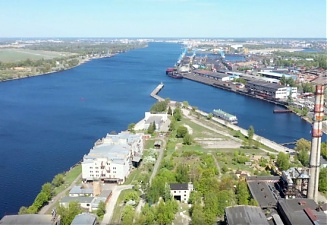Estonia, EU – Baltic States, Latvia, Legislation, Railways, Transport
International Internet Magazine. Baltic States news & analytics
Friday, 19.04.2024, 12:36
Latvia and Estonia join North Sea - Baltic Rail Freight Corridor
 Print version
Print version |
|---|
The connection to Riga and Tallinn has become part of the European rail freight corridor network, strengthening the existing freight transportation routes, said Petermane.
The North Sea - Baltic corridor was established with the aim of improving the attractiveness and efficiency of rail freight by providing a seamless and good quality path offer along the corridor.
The governance structure of RFC NS-B has been enlarged by including the representatives of the Transport Ministry from Latvia and Estonia in the executive board and Latvijas Dzelzcels, Eesti Raudtee (Estonian Railroads) and the Latvian allocation body LatRailNet in the management board of the corridor.
The Corridor routing has been extended from Kaunas in Lithuania to Riga and Tallinn as a main route and from Kaunas to Vilnius, Daugavpils and Krustpils to Riga as a diversionary line. All these lines have a track gauge of 1520 millimeters.
This interface between standard and broad gauge, together with the strategic location of Latvia and Estonia will contribute to a better connectivity of the European Union with the East and Asia, as well as open multimodal transportation opportunities from the Baltic Sea ports to the North Sea ports, said Petermane.
The RFC NS-B belongs to the corridors with the greatest potential for growth by providing high capacity transport services, added Petermane.
RFC NS-B was established in November 2015 according to the EU regulation concerning a European rail network for competitive freight. With the extension the corridor now runs through eight EU member states: starting in the North Sea ports of Antwerp, Rotterdam, Amsterdam, Wilhelmshaven, Bremerhaven and Hamburg spreading in central Germany through Aachen, Hannover, Magdeburg and Berlin to Warsaw and the Polish-Belarus border in Terespol. A branch leads from Magdeburg to Prague via Falkenberg and Dresden. In Falkenberg starts the Southern branch in Poland to Wroclaw and Katowice. Another branch goes from Warsaw to Kaunas, then to Riga and Tallinn.
RFC NS-B includes more than 8000 kilometers of rail lines and connects the most important North Sea ports with Central Europe and the Baltic States providing a rail bridge between Eastern and Western Europe.
- 28.01.2022 BONO aims at a billion!
- 26.08.2021 LLC Dizozols Investments finalizes investment attraction deal with Crowdestor with record-high profits
- 25.01.2021 Как банкиры 90-х делили «золотую милю» в Юрмале
- 30.12.2020 Накануне 25-летия Балтийский курс/The Baltic Course уходит с рынка деловых СМИ
- 30.12.2020 On the verge of its 25th anniversary, The Baltic Course leaves business media market
- 30.12.2020 Business Education Plus предлагает анонсы бизнес-обучений в январе-феврале 2021 года
- 30.12.2020 Hotels showing strong interest in providing self-isolation service
- 30.12.2020 EU to buy additional 100 mln doses of coronavirus vaccine
- 30.12.2020 ЕС закупит 100 млн. дополнительных доз вакцины Biontech и Pfizer
- 29.12.2020 В Rietumu и в этот раз создали особые праздничные открытки и календари 2021








 «The Baltic Course» Is Sold and Stays in Business!
«The Baltic Course» Is Sold and Stays in Business!

